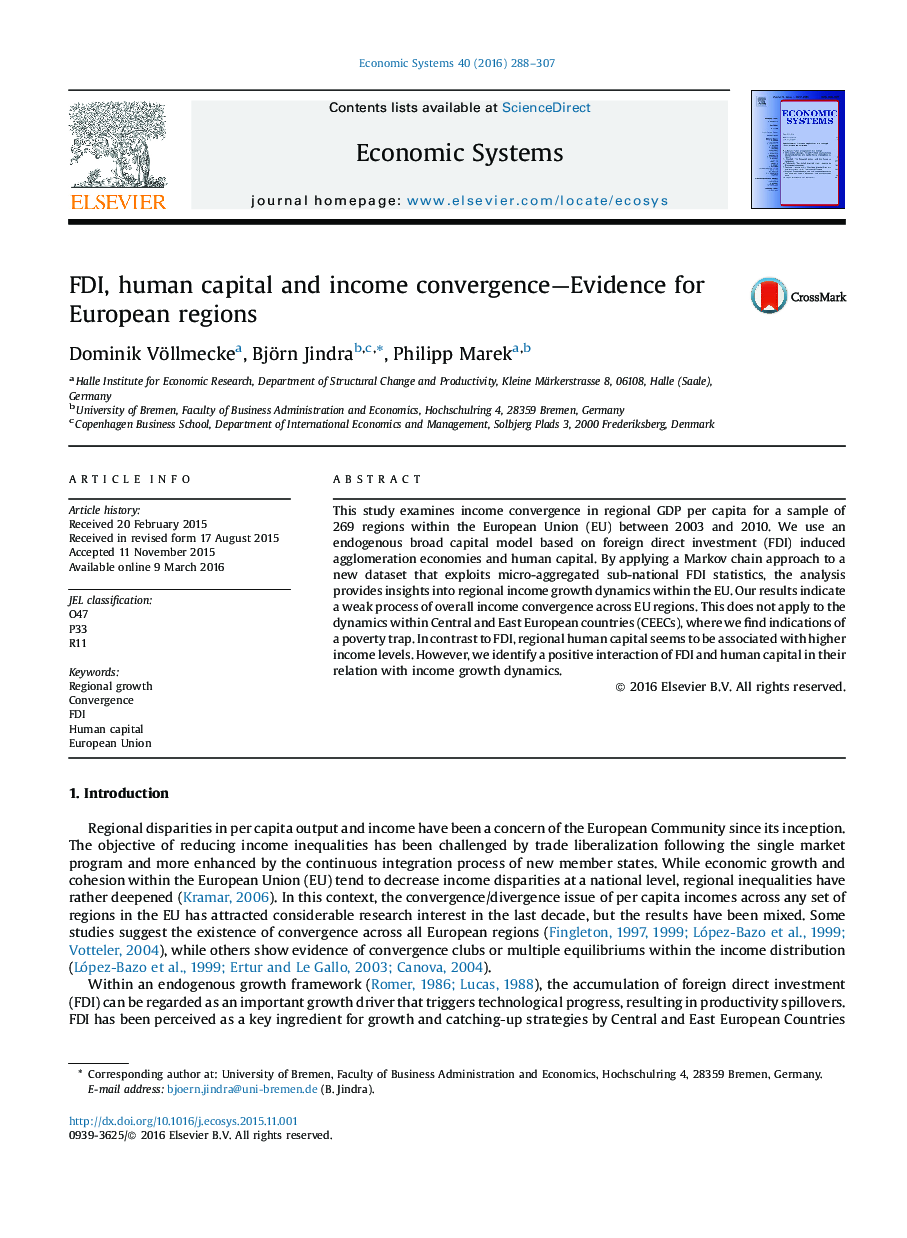| Article ID | Journal | Published Year | Pages | File Type |
|---|---|---|---|---|
| 5056308 | Economic Systems | 2016 | 20 Pages |
â¢This study examines income convergence in regional GDP per capita for a sample of 269 regions within the European Union for the years 2003-2010.â¢We use an endogenous broad capital model based on foreign direct investment (FDI) induced agglomeration economies and human capital.â¢We apply a Markov chain approach to a new dataset that exploits micro-aggregated sub-national FDI statistics.â¢The results indicate a weak process of income convergence across all European regions, while we also find some indications of a poverty trap in Central- and Eastern European countries.â¢For Central and East European countries we find indications of a poverty trap.
This study examines income convergence in regional GDP per capita for a sample of 269 regions within the European Union (EU) between 2003 and 2010. We use an endogenous broad capital model based on foreign direct investment (FDI) induced agglomeration economies and human capital. By applying a Markov chain approach to a new dataset that exploits micro-aggregated sub-national FDI statistics, the analysis provides insights into regional income growth dynamics within the EU. Our results indicate a weak process of overall income convergence across EU regions. This does not apply to the dynamics within Central and East European countries (CEECs), where we find indications of a poverty trap. In contrast to FDI, regional human capital seems to be associated with higher income levels. However, we identify a positive interaction of FDI and human capital in their relation with income growth dynamics.
